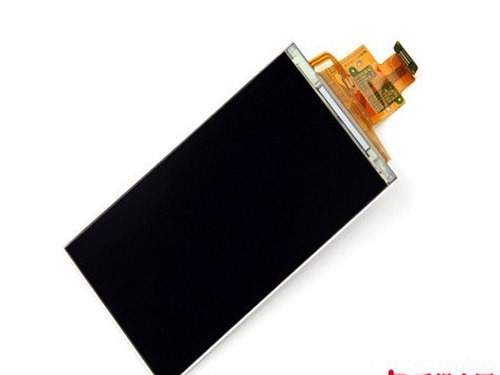For Asia (excluding Japan), Latin America, Eastern Europe, the Middle East and Africa, which are still mostly developing countries, DisplaySearch analyzed the size and resolution of smartphone displays in these regions, using PPI (Pixel Per Inch) as The indicator finds that mainstream PPIs for smartphone displays in these regions will be from 200-250 PPIs in 2013, and by 2018 mainstream PPIs will be 250-300 and 400-450. This also means that in the emerging regions, the mainstream of smart phone displays will be upgraded from 3.5†HVGA (480x320) and 4†WVGA (800x480) to higher specifications, with 5†to 5.5†HD (1280x720) and FHD (1920x1080) displays in the future. It will gradually become the mainstream specification for smart phones in emerging regions. Screen Resolution office projector,projector for office use,projector at office depot,home office projector,hd office projector Shenzhen Happybate Trading Co.,LTD , https://www.szhappybateprojectors.com
According to DisplaySearch, however, product prices continue to continue to decline in emerging regions. Manufacturers of display-related supply chains must consider how to reduce costs, in addition to continuously pushing up product specifications, in addition to panel production over the fifth-generation line. The line produces smart phone panels to achieve higher economic benefits. In addition, how to integrate other materials and increase the penetration rate to reduce the cost of backlight materials is the focus of the development of smart phone displays in the future. These are also current display-related manufacturers targeting emerging regions. The direction of efforts made by strong growth efforts.
Li Zhenlin, research director of DisplaySearch, said that in addition to the Japanese panel makers' development of LTPS (low-temperature polysilicon) and IGZO (metal oxide semiconductor) technologies as smart phone displays, Taiwan and China's panel makers and Korean panel makers have also started adding fifth-generation lines to a-Si. (Amorphous Silicon) capacity to produce mid-to-low-end smart phone displays, because future low-end 4G LTE smartphones require HD (1280x720) as the resolution of the display, which means that the five-generation line can produce panel-scale production. Benefits also help reduce costs.
At the same time, the panel maker will also increase the development progress of On-Cell and In-Cell more quickly. Although panel makers have also been actively investing in the production of external touch panels in recent years, they are still losing the mass production of professional touch panel makers. The coming price cuts, so the development of On-Cell and In-Cell will help panel makers have more competitive advantages, including price and product integration, and this is the driving force for many drive and touch IC manufacturers to integrate. However, the price cuts in low- and mid-range smart phones are too severe, and the integration of touch and display faces more challenges.
DisplaySearch pointed out that although the prices of mid-to-low-end smart phones continue to fall rapidly, it does not mean that the development of display specifications will stagnate, and that the PPI of low-end and mid-range smart phone displays will continue to develop with greater precision. However, the a-Si (amorphous silicon) technology still has limits, although it can be used to add more processes to make up for the lack of a-Si (amorphous silicon), but it will also increase the cost of the product and lower the production yield. In order to produce high-resolution panels at a-Si (amorphous silicon) capacity, in addition to investing and improving the process capabilities of existing machines, panel makers and IC manufacturers are actively investing in the development of Sub-Pixel Rendering (sub-pixel simulation). , Including Rainbow Rendering (Rainbow-style sub-pixel simulation), expect to increase the backlight penetration in high-resolution displays, in addition to reducing the cost of the backlight module, but also can increase the high resolution a- The yield of Si (amorphous silicon) displays, which in turn reduces production costs
There are generally three screen resolutions for office projectors:
One is a 4:3 screen suitable for office PPT playback. The first is the SVGA machine with the lowest price and the highest cost performance. This kind of machine is generally priced at around 2500 and has powerful performance. The disadvantage is that the resolution is 800X600, which is relatively low. The second is the XGA machine, which is an upgraded version of the SVGA machine with a resolution of 1024X768.
The other is the 16:10 aspect ratio screen used by some foreign-funded enterprises, which is the 1280X800 resolution of WXGA. However, with the transparent price of 1080p projectors, more and more companies will choose full HD 1080p projectors as their office projection solutions.
Office Projector Features
According to the needs of different office environments, office projectors are roughly divided into three categories.
One is a conventional projector that is placed or hoisted in the conference room, the second is a Portable Projector that can be carried around, and the third is an ultra-short-throw projector that is convenient for work reports and speeches.
Wireless Office Projector
With the advent of the Internet era, the emergence of a series of wireless office series has added new members to the office projectors. The wireless office projector is realized by the built-in wireless module of the ordinary office projector. Wireless office makes people do not need to switch signal lines frequently in office meetings, allowing people to have a better experience in meetings!
May 06, 2024